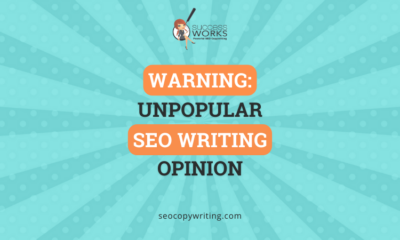MARKETING
Use this story-telling device to enhance PPC reporting

Psst. Come closer, I have a secret: I didn’t study advertising or business in undergrad. Film school was my jam, and I had a penchant for screenwriting. This gets relevant to you in a minute here; I promise.
A stripped-down definition of digital marketing is the deployment of advertising strategies informed by strong data analytics. In our industry, we obsess about numbers all the live-long day. But, numbers are BORING. As marketers, one way we can greatly improve the translation of data into actionable strategies is to utilize a simple story-telling device in our reporting.
Every story you’ve ever heard follows this format:
You meet a character or group of characters, these people really want something:
These guys want to find their missing friend.
But there is some force preventing them from getting what they’re after:
In this case, an inter-dimensional hellion backed by big science
The meat of the story is how these characters overcome or don’t overcome the forces working against them. Of course, there are some weird arthouse films that defy this convention, but that’s getting off track.
Here’s how you translate this into digital marketing data analytics:
You have a client, they want more leads, more sales, more content downloads, more webinar registrations…
But there are forces working against them: limited budgets, competition, a poorly designed website, bad creative….
The strategy you draft is how you will overcome these forces.
It’s going into the upside-down for your client.
The PPC story you tell can look like this:
“In Q4, our goal was to increase lead volume 20%, but we had to contend with increased search competition (show auction insights graph for Q4). Several new competitors entered the market and were bidding on our core keywords. This caused CPCs to rise 30% (show trend line of increased CPCs over time), so we were getting fewer overall clicks due to the inability to increase our budgets. To surmount this rising tide, we ran a location report (show a map with high conversion locations highlighted) to uncover which markets converted the best at the most efficient price points, and only bid on our keywords in these locales. We also made changes to the website to decrease user friction(show example of user experience before and after). This improved our conversion rate by 15%, which meant while we were getting fewer clicks, the clicks we did get were more likely to convert. Utilizing these tactics, we were able to increase overall lead volume 25% without ever increasing our budgets.”
Did you notice how I didn’t focus on actual performance KPIs, but the context of what was happening with the data? Now, you can’t tell this story without the supporting data. The numbers still matter. But when reporting on performance and showing data to a client, using this framework is helpful to:
- Keep your client in your corner – they understand the heroic feats you are undertaking to help them achieve their goals
- A story is something they can easily report back to their management team should they ask what’s going on in paid accounts – remember the human brain is wired for stories – this is why oral histories persist.
- Framing your challenges in this format helps you understand where there are strategy opportunities and what to look for in the future.
The beauty of this framework is that it can work for any look-back period. It can be applied to a year’s worth of data, a QBR, or a weekly report. Another important consideration is that this level of consultation is something we can do that AI and bots cannot. Crafting the right story to bring your data to life is the way forward if you want to continue to create relevant strategies and stay in alignment with goals.
P.S. If you want to learn more about ways to stay ahead of the bots, explore Thriving in an AI World: Tips for PPC Professionals

















![[OPINION] The promise of technology is the promise of people [OPINION] The promise of technology is the promise of people](https://articles.entireweb.com/wp-content/uploads/2023/01/1674969459_OPINION-The-promise-of-technology-is-the-promise-of-people-400x240.jpg)
![[OPINION] The promise of technology is the promise of people [OPINION] The promise of technology is the promise of people](https://articles.entireweb.com/wp-content/uploads/2023/01/1674969459_OPINION-The-promise-of-technology-is-the-promise-of-people-80x80.jpg)